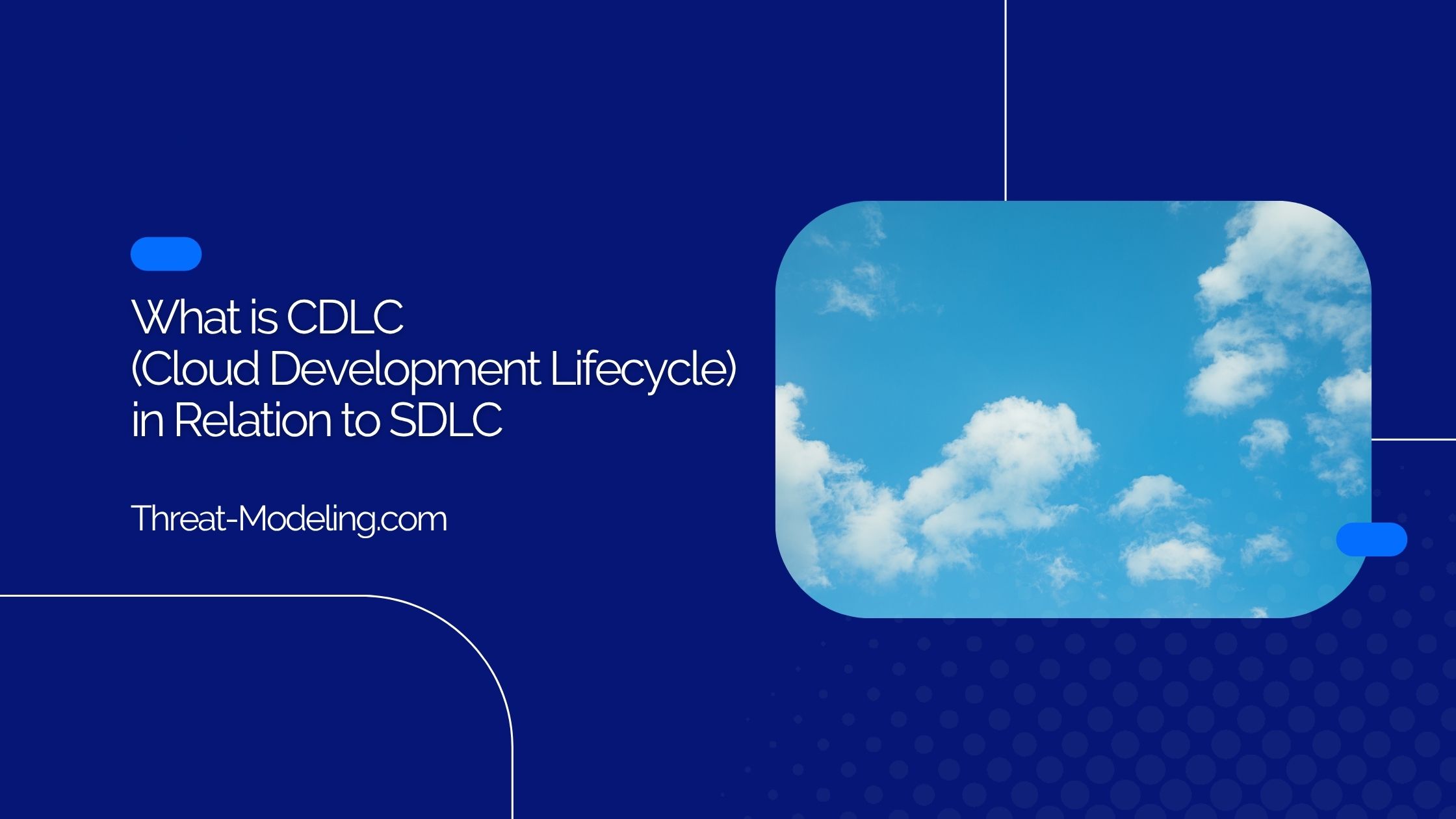What is the CDLC?
The Cloud Development Lifecycle, usually shortened to CDLC, is the modern roadmap that guides a software product from idea to live service when that product is designed to run on cloud infrastructure. It wraps the familiar checkpoints of planning, coding, testing, releasing, and maintaining in a cloud-first wrapper. In other words, teams still follow the same big steps that have shaped software engineering for decades, but every stage is optimized for elastic resources, distributed workloads, and the continuous, on-demand nature of the cloud. The moment a team chooses AWS, Azure, Google Cloud, or any other hosted platform, it steps onto the CDLC path by default because the cloud changes how we architect, secure, deploy, and scale our applications.
At first glance, a new life cycle might seem redundant. After all, the core activities—gathering requirements, writing code, guarding quality—have not vanished. What has shifted is the context. The cloud adds new capabilities such as autoscaling, serverless functions, multi-region failover, and consumption-based billing. It also introduces new risks, such as misconfigured identity policies or region-wide outages. The CDLC is the framework that captures these unique traits so that teams can leverage the advantages of the cloud while avoiding its pitfalls.
CDLC is a subset of SDLC (for the cloud)
Practitioners often describe the CDLC as a subset of the Software Development Lifecycle (SDLC), and that description holds true. The SDLC is the grandparent of structured development. It outlines the universal phases—requirements, design, implementation, verification, deployment, and maintenance—that underpin quality software. The CDLC does not discard any of those phases. Instead, it slips under the SDLC umbrella and tightens the focus wherever cloud-specific work is needed.
For example, the design phase of the SDLC asks architects to map out data flows, modules, and interfaces. The CDLC version of that same phase extends the map: it now includes cost forecasts for storage classes, region selection for latency, compliance zones for data residency, and identity boundaries in managed services. In this way, CDLC augments the parent model. It is narrower in scope—only covering cloud deployments—but deeper in detail wherever the cloud adds complexity. This fusion lets organizations adopt cloud computing without abandoning the proven discipline of the SDLC.
How does CDLC differ from SDLC?
While the CDLC sits inside the SDLC, notable differences emerge when we zoom in. The first is the emphasis on infrastructure as code (IaC). In a traditional data-center model, infrastructure changes were slow, manual, and often outside the scope of day-to-day developers. In the cloud, infrastructure definitions live in source control next to application code. Writing Terraform or CloudFormation templates becomes as routine as writing business logic. This blurs the line between development and operations, accelerating delivery but demanding new skills and governance.
The second difference lies in feedback loops. Cloud platforms generate near-real-time telemetry. Logs, metrics, and traces flow into dashboards within minutes of each deployment. CDLC encourages teams to bake these feedback tools into every stage, turning monitoring from an afterthought into a design input. Instead of waiting for a quarterly review, engineers can see performance and cost impacts the same day a feature is released.
Continuous delivery pipelines form the third area of divergence. On-premises workflows often accept long downtime windows. The CDLC expects blue-green deployments, canary releases, and rollbacks that complete in seconds. Automation is not a luxury; it is the default. Each commit triggers build, test, security scan, container image creation, and multi-region rollout. The cloud’s API-driven environment makes such pipelines possible, and the CDLC treats them as non-negotiable for maintaining velocity and reliability.
Finally, security shifts left even more aggressively in the CDLC. Threat landscapes in the cloud change swiftly, and misconfigurations can expose assets to the public internet within moments. As a result, threat modeling, policy as code, and runtime protections enter earlier in the lifecycle. The CDLC weaves identity management, encryption, and compliance checks directly into developer workflows instead of deferring them to a separate security team at the end.
The pros and cons of Cloud Development Lifecycle
Adopting a CDLC brings several advantages. Speed tops the list. Automated provisioning and elastic resources cut wait times, letting teams experiment and iterate rapidly. Cost visibility comes next. Many cloud dashboards reveal consumption down to the per-second level, allowing precise tuning of budgets. Observability is a close third. Built-in logging, monitoring, and tracing shorten diagnosis cycles and improve mean time to resolution.
Flexibility is another benefit. The CDLC allows organizations to expand to new regions, clone environments, or integrate managed services with minimal friction. This agility supports innovation and reduces the time to enter new markets. Disaster recovery, often neglected in on-premises scenarios, becomes easier when snapshots, replicas, and multi-zone architectures are only an API call away.
Yet the CDLC is not free of drawbacks. One challenge is complexity drift. The menu of cloud services grows daily, and weaving them into a coherent architecture can overwhelm teams. The pay-as-you-go billing model can shift from advantage to pain point when idle resources snowball into unexpected invoices. Vendor lock-in is a related concern, as managed services can tie workloads to proprietary APIs that are hard to replace later.
Security missteps represent another hazard. Because provisioning is fast, so is the propagation of mistakes. A single overly permissive role or an open storage bucket can expose data in seconds. Shared responsibility models also confuse newcomers; many assume the provider handles more security layers than it does. Finally, skill gaps emerge. Not every developer has experience with IaC, container orchestration, or advanced network policies. Training and cultural adjustments are required to maximize the CDLC’s benefits.
What should you include in your CDLC (Cloud Development Lifecycle)
Crafting a solid CDLC begins with clear governance. Teams need naming conventions, tagging standards, and account structures that prevent resource sprawl. Policies should define who can create environments, how long they live, and which approval gates apply. A well-defined landing zone sets the stage for consistent deployments.
Next comes infrastructure as code. Every piece of virtual hardware, network, database, storage bucket, and service accounts must live in a version-controlled template. By applying merge requests and code reviews to infrastructure, organizations guarantee reproducibility and auditability. This practice also underpins disaster recovery, because it lets teams rebuild complete stacks from scratch with a single command.
Continuous integration and delivery pipelines round out the automation layer. They compile code, run unit and integration tests, scan for vulnerabilities, enforce style guides, and produce artifacts such as container images or serverless bundles. Each pipeline should culminate in an automated deployment to a staging environment, followed by promotion gates that push to production only after human approval or automated checks pass.
Observability must be embedded from day one. Logs should ship to a centralized system where they are indexed and searchable. Metrics and traces should flow into a dashboard that correlates performance, reliability, and cost. Alerting policies need to strike a balance: they must signal real problems without drowning engineers in noise. By defining service-level objectives early, teams know which metrics to watch and which incidents to prioritize.
Security and compliance controls require equal emphasis. Identity access management rules must follow the principle of least privilege. Encryption should cover data in transit and at rest by default. Secrets management solutions prevent hard-coded credentials. Automated security scans review container images, dependencies, and infrastructure templates for vulnerabilities before release. Compliance frameworks, such as GDPR, HIPAA, or SOC 2, should translate into policy as code, enabling continuous audit rather than an annual scramble.
Finally, cost optimization belongs in the CDLC blueprint. Budgets and forecasts should accompany each environment. Engineers need guardrails like automated shutdowns for idle instances, rightsizing recommendations, and spending alerts. Financial accountability is more than an accounting concern; it drives design choices such as reserved instances, spot capacity, or serverless adoption.
How does threat modeling fit within CDLC
Threat modeling is the systematic exercise of identifying assets, mapping attack vectors, and planning defenses before code ships. Within the CDLC, it sits at the intersection of design and security. Because cloud architectures rely on managed services, exposed APIs, and external integrations, the attack surface evolves with each new feature. Embedding threat modeling early helps teams recognize risks unique to the cloud, such as overly broad IAM policies, insecure default configurations, or cross-region data exposure.
In practice, a CDLC-aligned threat modeling workflow begins during requirement gathering. Architects draft data flow diagrams that include cloud services: load balancers, queues, event buses, and external endpoints. They label trust boundaries—places where data crosses from one privilege level to another. Security specialists then guide the team through structured questions: What happens if a storage bucket becomes public? Can a compromised Lambda function pivot into the VPC? How would an attacker exploit temporary credentials obtained through metadata APIs?
The output of this exercise feeds design decisions. Teams might adopt network segmentation, add encryption layers, or tighten role assumptions. Because all infrastructure is defined in code, these defenses can be codified in templates. Static analysis tools can even check the model against IaC files, ensuring the implementation matches the agreed threat posture. As the product evolves, the threat model is versioned alongside application code, creating a living document rather than a one-off report.
During implementation and deployment, automated scanners and policy engines compare real cloud configurations to the threat model. They flag drift, such as a newly opened port or an expanded permission set. Incident response plans also stem from the model. By knowing the most probable attack paths, teams can pre-build monitoring rules and forensic tooling that match those scenarios. In this way, threat modeling becomes a continual guardrail rather than a gatekeeper.
Aligning threat modeling with the CDLC underscores a broader principle: security must integrate with velocity. Cloud teams cannot afford month-long security reviews that stall releases. Instead, they rely on light, iterative modeling sessions, automated checks, and just-in-time reviews. The CDLC framework offers the cadence—daily standups, sprint demos, continuous delivery pipelines—into which threat modeling naturally plugs. The result is a secure, cloud-ready product that reaches customers quickly without sacrificing protection.
Bringing it all together
What is CDLC (Cloud Development Lifecycle) in relation to SDLC? It is the specialized playbook that takes the time-tested steps of the SDLC and adapts them to a world where infrastructure is ephemeral, services are global by default, and change is constant. The CDLC keeps the discipline of structured development while injecting the agility and automation needed for cloud success. By weaving in infrastructure as code, continuous delivery, deep observability, cost vigilance, and proactive threat modeling, organizations enjoy the cloud’s promise without stumbling over its complexity.
Teams that ignore the CDLC risk treating the cloud like a traditional data center, missing out on speed and flexibility while inheriting new risks. On the other hand, organizations that embrace the CDLC unlock on-demand scale, faster feedback, and robust security. As more workloads shift skyward, understanding the nuances of the Cloud Development Lifecycle—and how it nests within the broader Software Development Lifecycle—becomes essential knowledge for modern engineers and leaders alike. In short, the CDLC is not a rival to the SDLC; it is its cloud-native offspring, carrying forward the family values of quality and predictability while learning new tricks for an ever-changing horizon.


